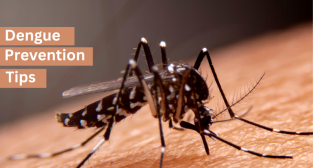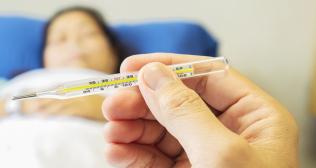
Effective Management Techniques for Acute Encephalitis Syndrome
Introduction
Acute Encephalitis Syndrome (AES) is a serious neurological disorder identified by an abrupt increase in the body temperature accompanied by changes in mental function, varying from a daze to unconsciousness and the sudden occurrence of seizures. Manifesting a high case-fatality rate, this illness experiences seasonal outbreaks annually, particularly impacting the lives of children under the age of 15. This syndrome encompasses a broad spectrum of etiologies, both infectious and non-infectious.
Symptoms
- Acute Onset Fever: AES presents with a sudden increase in the body temperature.
- Change in Mental Status: This encompasses various alterations in cognitive function, including confusion, disorientation, coma, or an inability to communicate verbally.
- New Onset Seizures: Excluding simple febrile seizures, AES may involve the sudden appearance of seizures in individuals with no prior history of such episodes.
- Increase in Irritability: Patients may exhibit heightened irritability beyond what is commonly observed in febrile illnesses.
- Somnolence: AES can lead to increased drowsiness or sleepiness than normally expected during a febrile illness.
- Abnormal Behavior: Individuals may display behaviors that deviate from their usual patterns, indicating neurological dysfunction beyond typical febrile responses.
Infectious Causes of AES
Infectious causes of AES include a wide range of viral, bacterial, parasitic, fungal, and rickettsial infections. Common viral pathogens associated with AES include:
- Arboviruses, including the Japanese encephalitis virus, the West Nile virus, and St. Louis encephalitis virus
- Herpes viruses, including Herpes simplex I and II, Varicella zoster, and Epstein-Barr
- Influenza, measles, mumps, and other myxo and paramyxoviruses
- Other viral agents such as adenovirus, parvovirus, and rhabdovirus
Bacterial, parasitic, and fungal infections can also lead to AES, with examples including pyogenic meningitis, tuberculosis, cryptococcosis, and malaria, among others. Rickettsial infections, such as scrub typhus and Rocky Mountain spotted fever, are notable causes.
Non-Infectious Causes of AES
Non-infectious etiologies contributing to AES encompass various inflammatory, metabolic, toxic, and drug-induced conditions. These include:
- Acute disseminated encephalomyelitis (ADEM)
- Autoimmune encephalitis
- Vasculitis
- Metabolic disturbances like electrolyte imbalances, Reye’s syndrome, hepatic or uremic coma
- Mitochondrial encephalopathy
- Drug-induced encephalopathy
Differentiating Between Infectious and Non-infectious AES
AES patients may present with infectious and non-infectious causes, making diagnosis challenging. Clinical features such as fever, focal signs, and seizures are more common in infectious encephalitis than in non-infectious encephalopathy. However, a comprehensive diagnosis and specific laboratory tests are crucial for differentiation.
Diagnosis
Diagnostic evaluation for AES typically involves a wide array of tests to identify the underlying cause. Here’s a breakdown of the diagnostic process:
- Complete Blood Count (CBC): CBC test helps assess for any abnormalities in the blood, including evidence of infection or inflammation.
- Blood Culture: Culturing blood samples can help identify bacterial infections that may be causing or contributing to AES.
- Electrolytes/Blood Glucose: Monitoring electrolytes and blood glucose levels is essential to detect any metabolic disturbances that can contribute to AES.
- Liver and Kidney Function Tests: Evaluating kidney and liver function can provide insights into any AES-related organ dysfunction.
- Peripheral Smear for Malarial Parasite: Particularly relevant in regions where malaria is endemic, examining a peripheral blood smear can help detect the presence of malaria parasites.
- Chest X-ray: X-ray study is performed to assess the condition of the lungs and detect any abnormalities, such as pneumonia, which may be associated with AES.
- Neuroimaging: MRI or CT scans of the brain are often conducted to evaluate for any structural abnormalities or signs of inflammation indicative of encephalitis.
- Cerebrospinal Fluid (CSF) Analysis: After stabilization and ruling out contraindications, analysis of CSF through lumbar puncture is crucial for assessing signs of inflammation, infection, or autoimmune involvement in AES.
- Electroencephalography (EEG): EEG may be performed if seizures are present or there is suspicion of non-convulsive status epilepticus (NCSE) or autoimmune encephalitis (AE), helping to detect abnormal brain activity.
- Autoimmune Workup: In cases where autoimmune encephalitis is suspected, specific autoantibody testing, including antineuronal antibodies, anti-thyroid antibodies, ANA, ESR, and tests for neuromyelitis optica (NMO) and myelin oligodendrocyte glycoprotein, may be warranted.
- Inborn Errors of Metabolism (IEM) Screen: This comprehensive metabolic evaluation involves testing arterial blood gases (ABG), plasma lactate, ammonia levels, and urine ketones and conducting dried blood spot analysis for tandem mass spectrometry and urine gas chromatography-mass spectrometry to identify any metabolic disorders contributing to AES.
By systematically conducting these diagnostic tests, healthcare providers can effectively identify the underlying cause of AES and tailor the treatment accordingly.
Treatment
Managing AES requires a multi-faceted approach focusing on initial stabilization, precise diagnosis, and prevention of secondary brain injury. Here’s a breakdown of the management options:
Antimicrobials:
Begin broad-spectrum antibiotics, including cephalosporins, anti-malarial, and antitubercular agents for bacterial pathogens.
Immunotherapy:
Use steroids for Hashimoto encephalopathy and autoimmune encephalitis and other immunosuppressant drugs, like rituximab or cyclophosphamide, for refractory cases. Plasmapheresis is also considered for immune-mediated encephalitis.
Monitoring and Support:
- Priority is given to stabilizing the patient’s airway, breathing, and circulation alongside other supportive measures.
- Patients with a Glasgow Coma Scale (GCS) < 8, signs of raised intracranial pressure (ICP), status epilepticus, or shock are managed in the intensive care unit.
- Blood glucose levels are regularly monitored to avoid hypoglycemia and hyperglycemia.
- Adequate analgesia and sedation are provided, avoiding noxious stimuli.
- Seizures are managed with anticonvulsants in cases with GCS < 8 and signs of raised ICP to prevent further intracranial pressure elevation.
By adhering to these management criteria, healthcare providers can recommend appropriate vaccinations for individuals at increased risk, optimizing outcomes for patients with AES and mitigating associated mortality and morbidity.
Conclusion
AES represents a complex clinical entity with diverse etiologies, necessitating a comprehensive approach to diagnosis and management. Understanding the specific infectious agents in different regions is crucial for effective surveillance, prevention, and treatment strategies. Collaboration between clinicians, epidemiologists, and public health authorities is essential for addressing the challenges posed by AES globally.
Popular Searches :
Hospitals: Cancer Hospital in Delhi | Best Heart Hospital in Delhi | Hospital in Amritsar | Hospital in Ludhiana | Hospitals in Mohali | Hospital in Faridabad | Hospitals in Gurgaon | Best Hospital in Jaipur | Hospitals in Greater Noida | Hospitals in Noida | Best Kidney Hospital in Kolkata | Best Hospital in Kolkata | Hospitals in Rajajinagar Bangalore | Hospitals in Richmond Road Bangalore | Hospitals in Nagarbhavi Bangalore | Hospital in Kalyan West | Hospitals in Mulund | Best Hospital in India | Gastroenterologist in Jaipur | Cardiology Hospital in India
Doctors: Dr. Rana Patir | Dr. Rajesh Benny | Dr. Rahul Bhargava | Dr. Jayant Arora | Dr. Anoop Misra | Dr. Manu Tiwari | Dr. Praveer Agarwal | Dr. Arup Ratan Dutta | Dr. Meenakshi Ahuja | Dr. Anoop Jhurani | Dr. Shivaji Basu | Dr. Subhash Jangid | Dr. Atul Mathur | Dr. Gurinder Bedi | Dr. Monika Wadhawan | Dr. Debasis Datta | Dr. Shrinivas Narayan | Dr. Praveen Gupta | Dr. Nitin Jha | Dr. Raghu Nagaraj | Dr. Ashok Seth | Dr. Sandeep Vaishya | Dr. Atul Mishra | Dr. Z S Meharwal | Dr. Ajay Bhalla | Dr. Atul Kumar Mittal | Dr. Arvind Kumar Khurana | Dr. Narayan Hulse | Dr. Samir Parikh | Dr. Amit Javed | Dr. Narayan Banerjee | Dr. Bimlesh Dhar Pandey | Dr. Arghya Chattopadhyay | Dr. G.R. Vijay Kumar | Dr Ashok Gupta | Dr. Gourdas Choudhuri | Dr. Sushrut Singh | Dr. N.C. Krishnamani | Dr. Atampreet Singh | Dr. Vivek Jawali | Dr. Sanjeev Gulati | Dr. Amite Pankaj Aggarwal | Dr. Ajay Kaul | Dr. Sunita Varma | Dr. Manoj Kumar Goel | Dr. R Muralidharan | Dr. Sushmita Roychowdhury | Dr. T.S. MAHANT | Dr. UDIPTA RAY | Dr. Aparna Jaswal | Dr. Ravul Jindal | Dr. Savyasachi Saxena | Dr. Ajay Kumar Kriplani | Dr. Nitesh Rohatgi | Dr. Anupam Jindal |
Specialities: Heart Lung Transplant | Orthopedic | Cardiology Interventional | Obstetrics & Gynaecology | Onco Radiation | Neurosurgery |



















